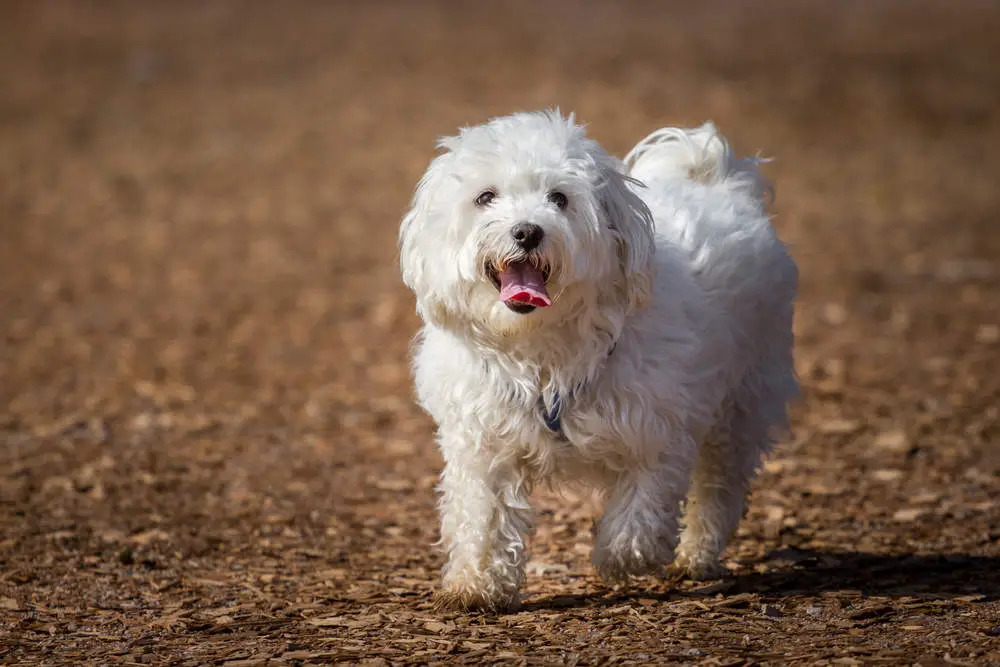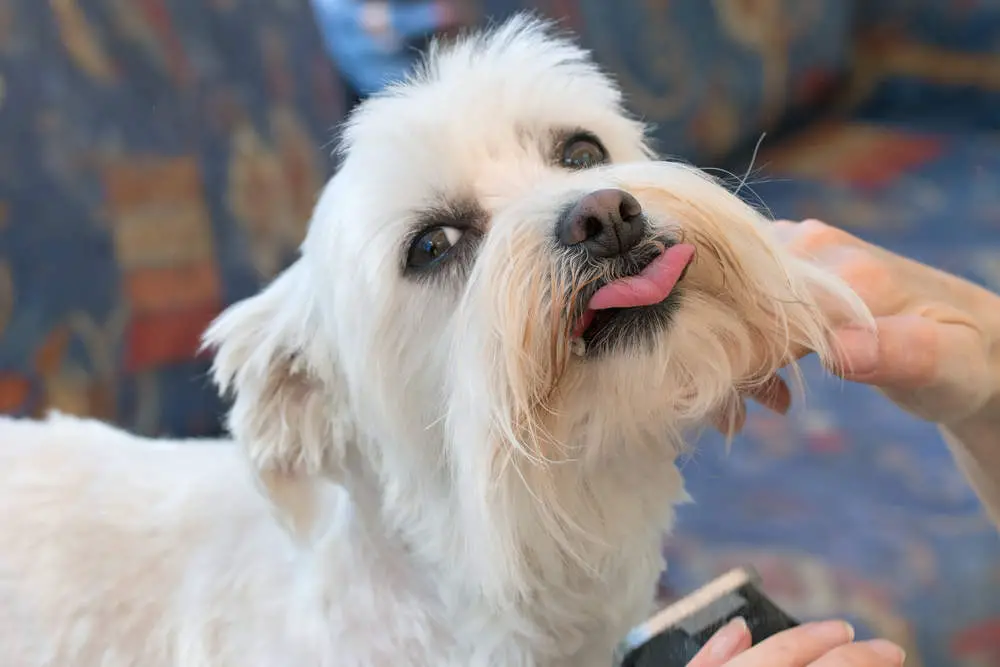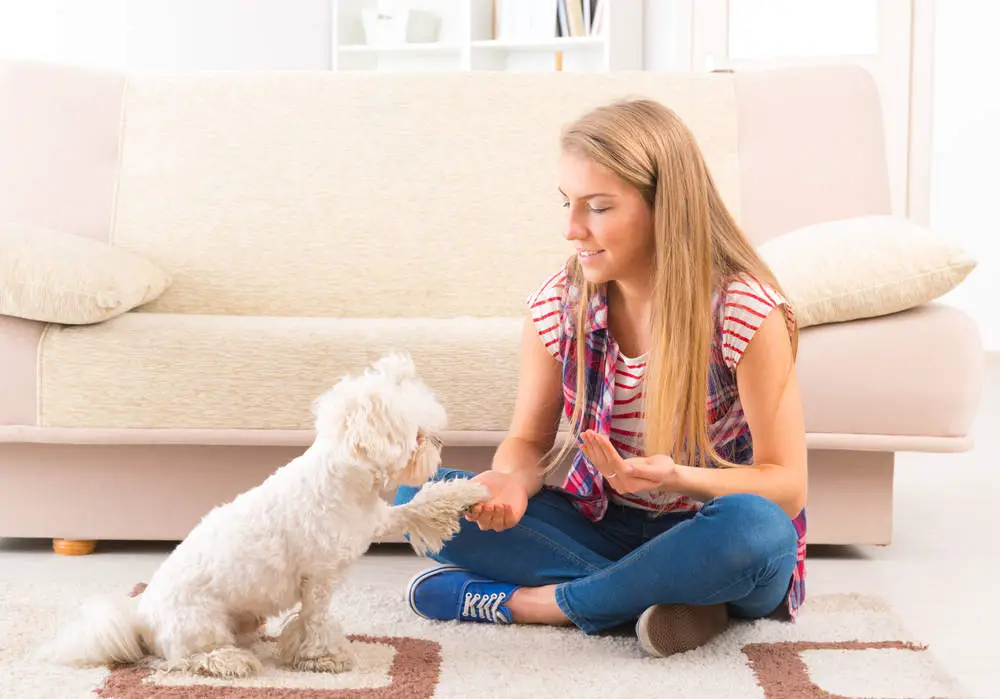
Good things sure do come in small packages—if you’ve ever met a Maltese, you know exactly what we’re talking about! These joyful, glamorous dogs, with their shiny, soft, coats, may be small, but their personalities and hearts definitely aren’t.
From their origins over 2,000 years ago to the present day, Maltese are one of the most adored dog breeds in the world. Their convenient size makes them a great pet, especially for small houses and apartments.
If you’re thinking of welcoming these charming, intelligent dogs into your family, ensure that you’re not just falling for those irresistible puppy dog eyes and long, snow-white coats! As with every breed, caring for a Maltese comes with its own terms and conditions.
To make the job easier, we’ve put together a ‘Maltese 101’ to give you all the information you’ll ever need on the breed including links to more thorough articles on the breed. Read on to know more about this beautiful breed!
Maltese At a Glance
- Group: Toy
- Height: 8-10 inches
- Weight: 4-7 pounds
- Coat: Long, white, and silky single-layer coat and no undercoat
- Life Expectancy: 12-15 years
- Exercise Requirements: Moderately energetic; requires 20 minutes of exercise a day
- Bred For: Lapdog purposes
- Grooming Needs: High
- Friendliness: High
- Kid-Friendliness: Mostly
- Playfulness: High
A Walk through Maltese History
When we say that the Maltese have been stealing hearts since times immemorial, we’re really not exaggerating; one of the oldest breeds known to humankind, Maltese go back well over 28 centuries.
A girl may have no name but the Maltese definitely had quite a few names. Throughout history, the Maltese have been referred to as the “Roman Ladies Dog”, “Melitae Dog”, the “Spaniel Gentle”, the “Maltese Lion Dog”, the “Maltese Terrier”, “Ye Ancient Dogge of Malta”, the “Bichon”, and lastly (and our favorite!), “The Comforter”!
Many believe the ancient breed’s origins lie in the Mediterranean island of Malta and the Spitz (Spaniel-like dogs), thanks to their featuring on ancient Greek pottery and even find mentions in Aristotle’s philosophical works. Yet others believe that these dogs originated in Italy, while some others choose to believe that the breed is Asian, playing a part in the development of many small Asian dog breeds.
Despite the haziness in the “X-Dog Origins: Maltese” story, the Maltese found widespread acceptance around the world. The Greeks built tombs in memory of their Maltese, while the ancient Egyptians decorated their artifacts with images of the dog.
The Egyptians also believed that the Maltese could cure people of their diseases (like the Europeans would also come to believe, later), which led to the practice of placing these dogs on the pillows of the sick. This is also where the nickname “The Comforter” comes from.
Since then, these dogs have been at the side of many owners over the centuries and are known for being prized companions as well as for their fierce loyalty.
Maltese were always seen as a distinct dog breed, placed in high esteem and extremely popular, especially among the upper echelons of English society. These dogs were the go-to choice for ladies of the nobility in the 1300s, when it came to companionship.
By the 15th century, the breed had quite securely captured the hearts of the French nobility, finding a prized spot in the arms of many French aristocrats. During Henry the Eighth’s reign, the Maltese found themselves in the British Isles, and by the end of the 16th century, in the palaces of Queen Elizabeth I, Mary Queen of Scots and Queen Victoria!
In fact, so loved were these dogs by commoners, nobility, and artists alike, that they even regularly featured in Francisco Goya and Sir Joshua Reynold’s portraits of beautiful women.
Unlike most other toy breeds, Maltese aren’t a result of miniaturizing larger breeds. Maltese have always been small dogs. In fact, in true, typical human fashion, attempts were made to make this small breed even smaller in the 17th and 18th centuries—while these attempts were “successful” (squirrel-sized dogs became a reality), the experiments nearly destroyed the breed.
If not for timely cross-breeding with other small dogs, the breed wouldn’t have been revived; this also explains why so many other breeds are related to the Maltese.
Despite all the popularity, respect and esteem the breed commanded, it was only in the late 1800s that the Maltese found their way to the United States. It took another few years for the American Kennel Club to recognize the breed, and in 1888, the Maltese made an appearance in the club’s rosters.
Learn more about the Maltese breed with the following articles:
- Are Maltese Dogs Expensive?
- Maltese Mix Breeds: 26 of the Most Popular
- Malchi (Maltese Chihuahua Mix) Breed Facts
- Highland Maltie (Westie Maltese Mix) Breed Information
- Maltese vs Westie: Everything You Need to Know
Characteristics of the Breed

Physical Characteristics
The breed is characterized by long, silky, white hair all over the body. This coat, generally floor length, is thick and straight and while earlier Maltese are said to have come in many colors, they are now white, without exception.
Maltese don’t have undercoats, due to which they don’t shed much and are perceived to be hypoallergenic. However, the lack of an undercoat makes them intolerant of cold; while a sweater on your Maltese is super cute, it’s also a necessity in the winter/cold weather, especially on outdoor walks. These dogs also don’t tolerate extreme heat well.
Once you can draw your attention away from the coat, you’ll notice the slightly rounded skull, the floppy ears, black (very boopable) nose, the graceful tail, the straight, short legs, and the alert, dark eyes.
Maltese are generally between 4-6 pounds and never over 7. Male dogs are 8-10 inches at the shoulder while females are between 8-9 inches. Beware “teacup” Maltese; many breeders sell dogs that are less than 4 pounds, even at maturity; such dogs are prone to genetic disorders and health risks.
Learn more about Maltese physical characteristics with the following articles:
Maltese Character
Maltese are intelligent, devoted, lively, sweet dogs, and their size makes them a superb option for apartments. These dogs adapt well to whatever environment they’re put in and make for highly responsive, effective watchdogs.
Despite their aristocratic miens, Maltese pack a ton of energy into their small frames! They’re quick learners, especially with treats, praise, and rewards in the equation. This makes them easy dogs to train.
The breed’s temperament is subject to a few factors, such as socialization, training and genes. A nice temperament means curiosity, playfulness and approachability in abundance.
Since Maltese have always been lapdogs and companions and are used to always getting their way (even if you don’t want to let them!), they crave attention from their parents; without this, things can get as serious as separation anxiety. In extreme cases of being left alone for long periods, they may bark incessantly and make quick work of your prized furniture!
Additionally, since they’re so used to being the center of attention, Maltese don’t deal with sharing the spotlight. They can be hostile towards other dogs and children for this reason and tend to become extremely protective.
This can lead to barking and even biting, in extreme cases—a sign that they are perceiving the other animal or person as a threat to the relationship they share with their “hoomans”. They have no perception of their own tiny size and will willingly take on dogs 10 times bigger!
Even if you manage to find an extremely tolerant Maltese, it may not be a great choice if you have small children in the family. This is not only owing to their intolerance but also the fact that they are small and can get easily injured.
However, if the dogs are taught their place in the household and are properly socialized and trained, they do better in households. Start socializing your Maltese early, exposing him or her to different sights, sounds, people, and experiences when young. This results in your pupper growing up to be a well-rounded, well-behaved dog.
Learn more about Maltese temperament with the following articles:
- Do Maltese Bark a Lot?
- Can Maltese Swim?
- Can Maltese Be Left Alone?
- Do Maltese Get Along With Other Dogs?
- Why Do Maltese Lick So Much?
- Are Maltese Easy to Train?
- Do Maltese Like to Cuddle?
- Are Maltese Dogs Aggressive?
Caring for Your Maltese

Grooming
Your Maltese’s soft coat requires careful and continuous grooming to keep its shiny, lustrous nature. Commonly, Maltese parents keep their puppers’ coats trimmed short, leading to a wavy, fluffy end product.
If you keep the coat long, routine grooming is a must. This means brushing your dog daily (as opposed to twice or thrice a week for short coats) and haircuts every few weeks.
It should also be noted that Maltese can get suntanned! During hot summers, your Maltese’s coat can get tanned black; vice-versa, their black noses can fade to pink when there is a lack of exposure to the sun (a phenomenon known as “winter nose”).
Maltese don’t shed much, but their coats are prone to matting and getting dirty easily. If the coat is matted, work through it with your fingers; if that doesn’t work, use conditioning oil or a detangling spray.
A bath every week may be a necessity to keep your dog clean. Ensure you remove all knots before the bath, though, as knots only get tighter after wetting.
Maltese tend to have tear-staining underneath their eyes (this starts at 4-5 months), which can be controlled with pet-store products specifically manufactured to deal with this. Alternately, cleaning the eyes with warm water is also sufficient. Tying a bow on their heads not only leads to a super-cute result but also keeps the hair out of the eyes, preventing irritation.
You should also pay attention to your dog’s dental hygiene and may have to brush your dog’s teeth at least twice or thrice a week, if not daily, to keep away the teeth and gum problems.
Similarly, check your Maltese’s ears at least once a week. In case of any bad odor or sensitivity, visit the vet for a checkup. Maltese also have a lot of hair in their ears and this needs to be removed; you can either ask the vet or groomer or do it at home (but only after learning how to do it properly from your vet or groomer).
Nails should be trimmed once or twice monthly, as this keeps away any painful tearing and problems. Clicking sounds on the floor are an indicator that your Maltese requires a nail-trim.
Oh, and always clean the beard after a meal!
Check out these articles for more on Maltese grooming:
Training and Exercise
As mentioned earlier, Maltese need to be properly trained and socialized early to ensure they grow up well—you can start by taking them to parks, stores, get them to meet neighbors or have visitors over often. Though they may display a stubborn streak at some points, they are smart and quick learners.
Maltese are moderately energetic and require at least 20 minutes of exercise daily for mental and physical stimulation. They enjoy fun activities and games, as well as a daily walk. These dogs carry their playfulness well into their old age, and due to their small size, don’t require too much exercise to stay safe.
Remember, wait till your puppy is at least 8 months old before you start embarking on long walks together; his or her bones are still developing at this age. Letting your puppy loose in a fenced yard to play at his own pace, till maturity, is a good idea. Once your dog hits maturity, check with your vet before starting a regimented training/exercise program.
Though you may encounter challenges housebreaking your Maltese, you can easily paper or litter train them. Crate training is a good option, as is enrolling your pupper in puppy kindergarten!
Check out these articles for more on Maltese training and exercise:
Feeding
Feed your Maltese a quarter to half a cup of dry food, divided into 2 meals a day. Feeding him or her from a stainless steel, glass or ceramic bowl is recommended; stay away from plastic!
Constantly monitor your Maltese’s weight; being able to feel the ribs over the sides is an indicator that your Maltese is in ideal shape.
Maltese may be picky eaters as they have delicate digestive systems. Teeth and gum problems may also deter them from eating well. Factor in your dog’s physical characteristics and the quality of the food, too, when feeding him or her; don’t just go by standard feeding quantities and practices as this could result in you overfeeding or underfeeding your Maltese.
Common Health Problems
As delicate dogs, Maltese are prone to their own set of health problems. This is also further compounded by improper breeding, mistreatment and abuse, which makes it important that you get your puppy from a proper breeder (or even better, adopt!). Most commonly, the health problems faced by Maltese are:
- Collapsing Trachea
- Patellar Luxation
- Portosystemic Shunts (PSS)
- Reverse Sneezing
- Hypoglycemia
- Progressive Retinal Atrophy (PRA)
- White Dog Shaker Syndrome
Related: Why Does My Maltese Keep Coughing?
The Bottom Line
Maltese are extremely cute dogs but caring for one may take up more energy, time, and effort than anticipated!
If you’re going to a breeder, look for someone who is ethical and isn’t abusing the dog. From a litter, pick a puppy who isn’t too shy or too much of a bully; meeting one of the parents will give you a good idea of the puppy’s future temperament.
Instead of an individual breeder who you aren’t sure about, consider an organization like the American Maltese Association, Inc, that lists certified breeders that follow standardized, ethical practices; the association is also a member of the American Kennel Club, so you know you can trust them!
If possible, adopt and don’t shop—many rescue organizations and groups have Maltese that are looking for loving homes and second chances at happiness. Many owners don’t anticipate the liveliness that Maltese bring and abandon them, most commonly, for excessive barking.
Organizations such as the American Maltese Rescue Association and Northcentral Maltese Rescue do a great job of finding mistreated or abandoned Maltese and getting them forever homes.
Don’t dismiss adoption right away; even if you don’t find a Maltese, you’ll be surprised to find another pure soul that’s capable of as much, if not more, love.
